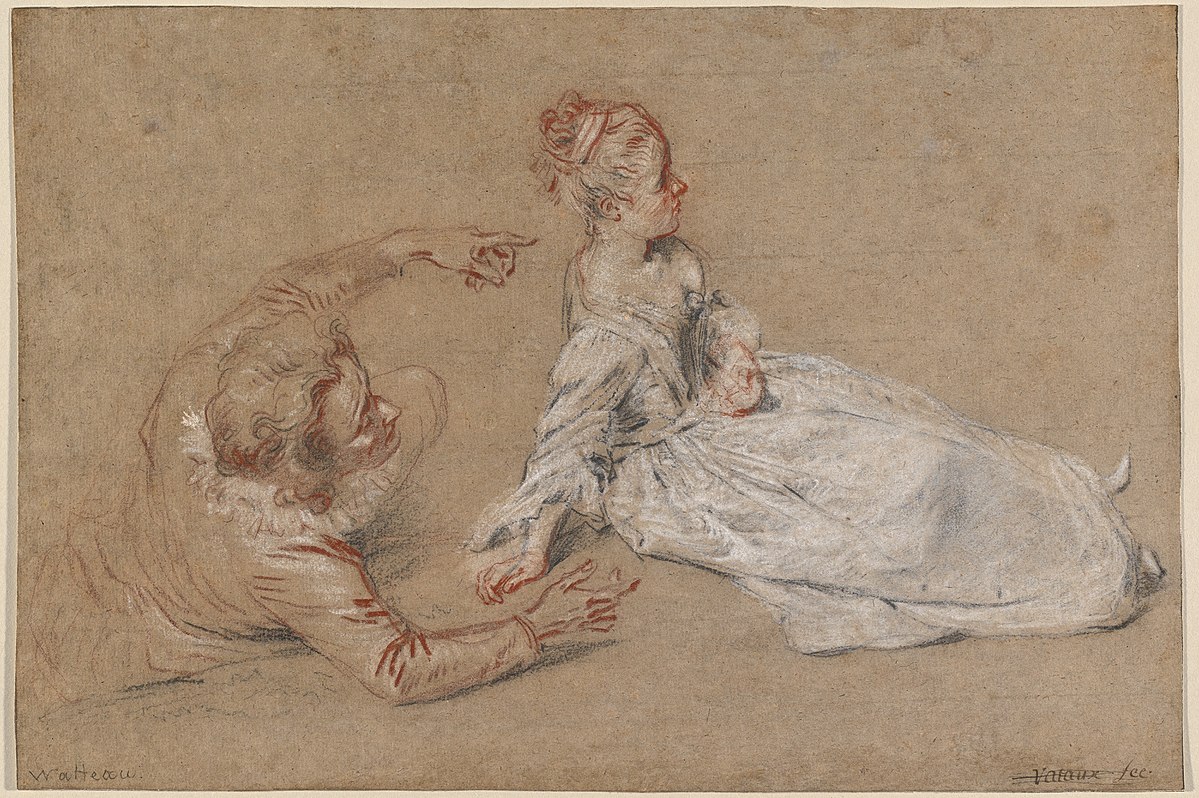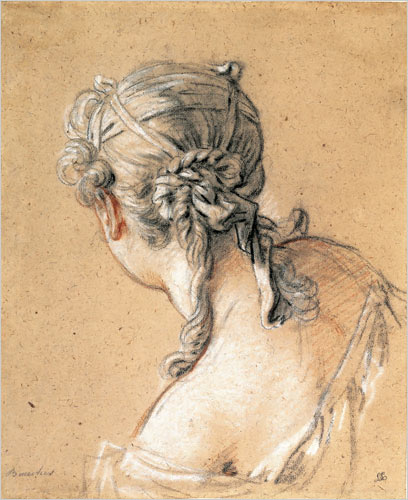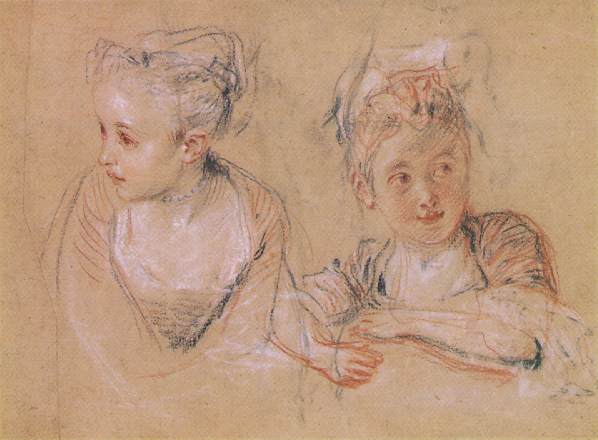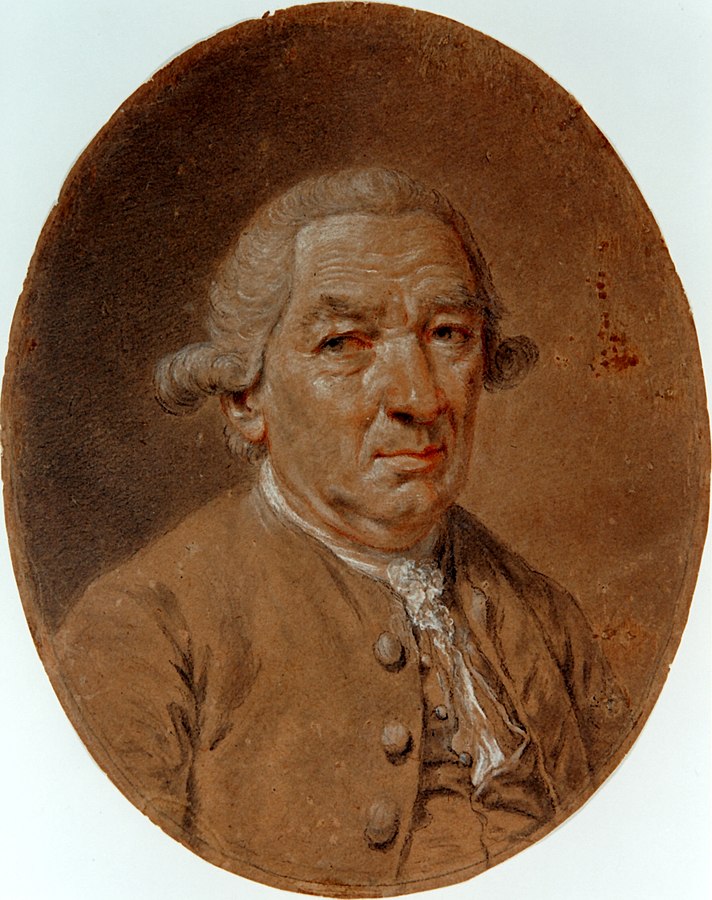Sigmund Freudenberger’s Musik. Swiss National Library, Prints and Drawings Department. Source.
The purpose of Aux Trois Crayons is to explore why certain art is famous, expensive or worth a place in a museum. What makes art interesting to the viewer? What makes one piece of art worth more than another?
Also, we plan to explore why some art is stolen. Why are some pieces of art stolen…repeatedly? What happens to art once it is stolen? What motivates a person to steal art?
“Aux Trois Crayons” is a technique used that combines red, black and white chalk to create an image. Other chalk drawing examples could include fewer or even more colors to create an image (ex: deux crayons, quatre crayons)
Images in the Slideshow Above:
Antoine Watteau’s A Man Reclining and a Woman Seated on the Ground, c. 1716. National Gallery of Art. Source.
François Boucher’s Bust of a Young Woman in a Shift with Her Hair Tied Up, Seen from Behind, c. 1740. Private Collection. Source.
Antoine Watteau’s Jeune Fille. The Morgan Library & Museum. Source.
Manuel Salvador Carmona’s Retrato de Don Pedro Salvador Carmona, c. 1780. The Museum of Fine Arts of Córdoba. Source.




